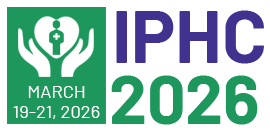Drug Testing
A technical examination of a biological material, such as urine, hair, blood, breath, sweat, or oral fluid/saliva, is used in a drug test to ascertain the presence or absence of a specific parent drug or its metabolites. Employers and parole/probation officials screening for substances that are illegal (such cocaine, methamphetamine, and heroin) and police officers checking for the presence and concentration of alcohol (ethanol) in the blood, generally referred to as BAC, are some major uses of drug testing (blood alcohol content). While the great majority of drug tests in sports and the workplace involve urine, BAC tests are often conducted using a breathalyser. There are other additional techniques with differing degrees of precision, sensitivity (detection threshold/cutoff), and detection period exist.

Kenneth R Pelletier
University of California, United States
Gregory S Anderson
Thompson Rivers University, Canada
David John Wortley
World Lifestyle Medicine Education Services, United Kingdom
Amelia Burke Garcia
NORC at the University of Chicago, United States
Rafaela Julia Batista Veronezi
Physiotherapist, Neuroscientist & Public Health Educator, United States
Roman Sharnuud
University of Tennessee, United States



Title : The impact of AI on the future of public health and preventative healthcare
David John Wortley, World Lifestyle Medicine Education Services, United Kingdom
Title : Personalized and Precision Medicine (PPM) as a unique healthcare model to secure the human healthcare, wellness and biosafety through the view of public health, network-driven healthcare services and lifestyle management
Sergey Suchkov, 1N.D. Zelinskii Institute for Organic Chemistry of the Russian Academy of Sciences, Moscow, Russia, Russian Federation
Title : Psychoeducation programs to address post-traumatic stress injuries and mental health in public safety and frontline health care workers
Gregory S Anderson, Thompson Rivers University, Canada
Title : Managing integration and interoperability of intelligent and ethical transformed health and social care ecosystems
Habil Bernd Blobel, University of Regensburg, Germany
Title : Scientific evaluate quantification of social and behavioral by scalp acupuncture on children with autism spectrum disorder
Zhenhuan Liu, University of Chinese Medicine, China
Title : Environmental Public Health Impact Assessment (EHIA) process for tobacco processing plants
Vijayan Gurumurthy Iyer, Techno-Economic- Environmental Study and Check Consultancy Services, India